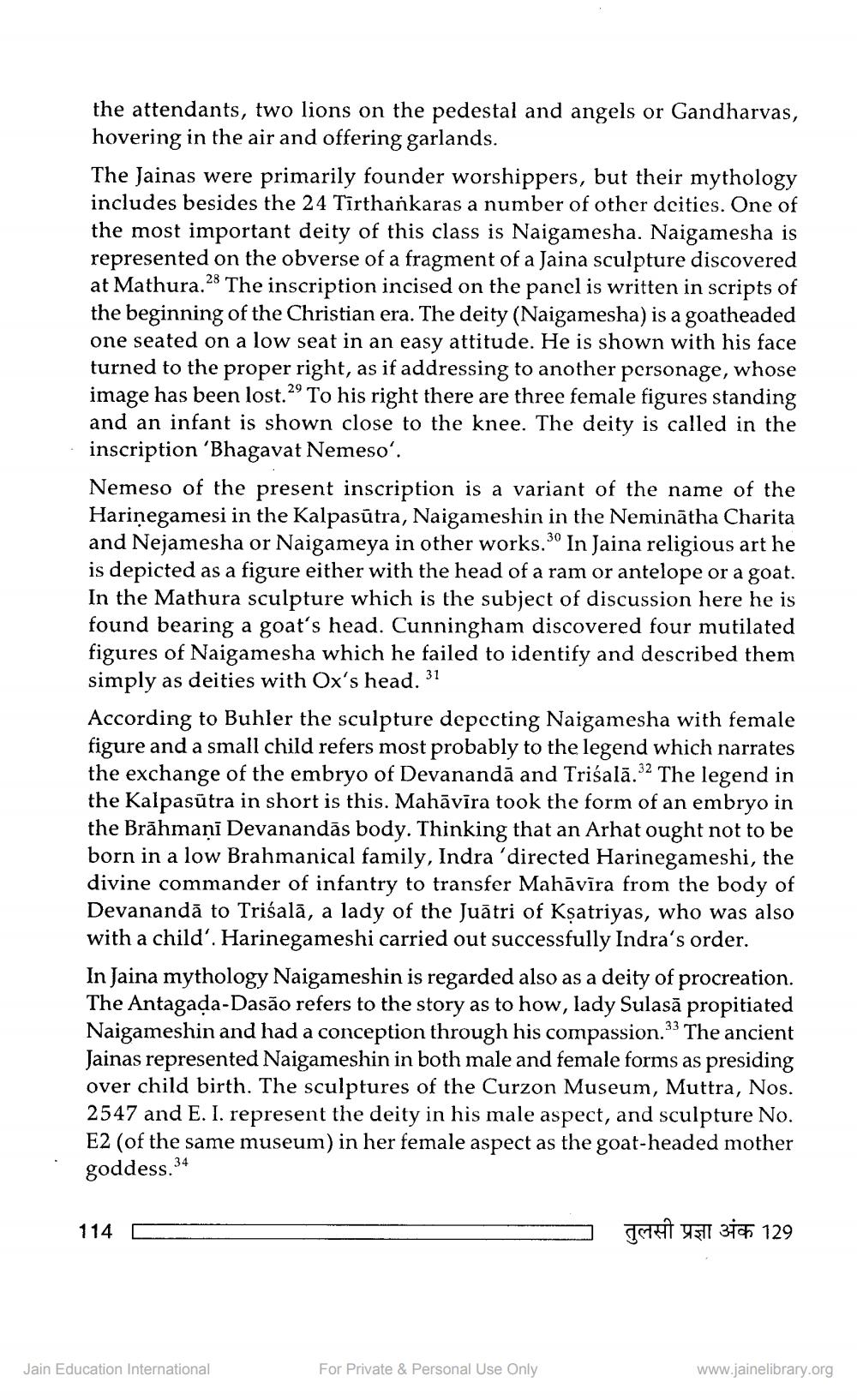________________
the attendants, two lions on the pedestal and angels or Gandharvas, hovering in the air and offering garlands. The Jainas were primarily founder worshippers, but their mythology includes besides the 24 Tīrthankaras a number of other deities. One of the most important deity of this class is Naigamesha. Naigamesha is represented on the obverse of a fragment of a Jaina sculpture discovered at Mathura.28 The inscription incised on the panel is written in scripts of the beginning of the Christian era. The deity (Naigamesha) is a goatheaded one seated on a low seat in an easy attitude. He is shown with his face turned to the proper right, as if addressing to another personage, whose image has been lost.29 To his right there are three female figures standing and an infant is shown close to the knee. The deity is called in the inscription 'Bhagavat Nemeso'. Nemeso of the present inscription is a variant of the name of the Harinegamesi in the Kalpasūtra, Naigameshin in the Neminātha Charita and Nejamesha or Naigameya in other works.30 In Jaina religious art he is depicted as a figure either with the head of a ram or antelope or a goat. In the Mathura sculpture which is the subject of discussion here he is found bearing a goat's head. Cunningham discovered four mutilated figures of Naigamesha which he failed to identify and described them simply as deities with Ox's head. 31 According to Buhler the sculpture depecting Naigamesha with female figure and a small child refers most probably to the legend which narrates the exchange of the embryo of Devanandā and Trisalā.32 The legend in the Kalpasūtra in short is this. Mahāvira took the form of an embryo in the Brāhmani Devanandās body. Thinking that an Arhat ough
ht not to be born in a low Brahmanical family, Indra 'directed Harinegameshi, the divine commander of infantry to transfer Mahāvīra from the body of Devanandā to Trišalā, a lady of the Juātri of Kșatriyas, who was also with a child'. Harinegameshi carried out successfully Indra's order. In Jaina mythology Naigameshin is regarded also as a deity of procreation. The Antagada-Dasão refers to the story as to how, lady Sulasā propitiated Naigameshin and had a conception through his compassion.33 The ancient Jainas represented Naigameshin in both male and female forms as presiding over child birth. The sculptures of the Curzon Museum, Muttra, Nos. 2547 and E. I. represent the deity in his male aspect, and sculpture No. E2 (of the same museum) in her female aspect as the goat-headed mother goddess. 34
114
D
-
In
un 3ich 129
Jain Education International
For Private & Personal Use Only
www.jainelibrary.org




